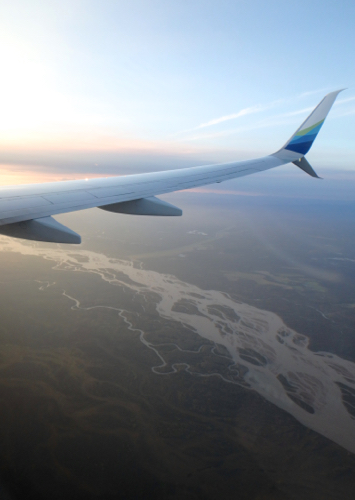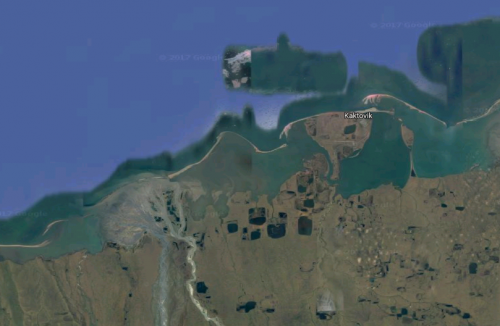This is the fourth journal in a series of posts explaining the science of our expedition.
It is easy for most people to understand why a scientist might study animals like polar bears or bowhead whales. It's a little harder to understand why a scientist might go all the way to Northern Alaska to study mud.
Scientifically speaking, the team and I are studying sediments. Sediments are formed when rocks are weathered into tiny pieces. Sediments can be moved by water, wind, and gravity. In the Arctic, most of the sediment is moved by water. Glaciers scrape on bedrock, grinding it into sediments of different sizes. Once the sediments are broken down, they erode into streams and rivers.
As sediments travel downstream, they are deposited if the water slows enough. You can see deposition for yourself after a flood when sand appears on roads after flowing water slows and dries up. Deposited sediment is important for the entire Arctic food chain. Deposition and erosion lead to braided river channels, or rivers that have lots of different channels coming together and splitting apart. Braided rivers are characteristic of the tundra and provide habitat for willow trees, caribou, and birds.

When a river meets the ocean, sediments are deposited in the slow moving ocean waters. They form deltas when they build up at the mouth of a river. Deltas are rich in life because they are a meeting of terrestrial, aquatic, and marine ecosystems. Sediment deposition along the coast can also lead to the formation of barrier islands. Kaktovik, the town Ellie and I will visit when we leave Lake Peters, is built on a barrier island and the population of the town relies on sediment deposition to replace the sediments eroded by ocean currents.

In addition to creating habitat, sediments also transport nutrients. Glacial sediments are high in iron. When iron-rich sediments reach the ocean, they nourish tiny creatures called phytoplankton. PhytoplanktonSmall or microscopic aquatic plants that float or drift in fresh or salt water. is the base of the marine food webs, meaning that without healthy populations, larger animals like fish, whales, and even polar bears would struggle to get the food they need.
While mud may seem boring, once you dig deeper, it becomes clear that Arctic processes rely on sediment transport. Studying "mud" means you are studying the foundation for oceans, rivers, plants, and even bowhead whales and polar bears.


Comments